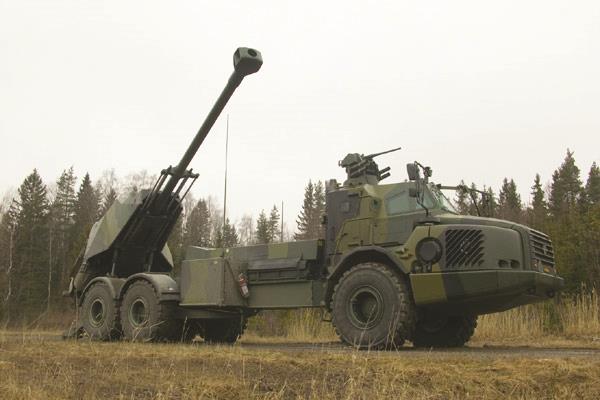“This has been a tough period for the industry, with both the UK and many international customers operating within constrained public resources,” wrote chief executive of aerospace, defence, security and space trade body ADS Paul Everitt in the 2015 ADS UK Defence Outlook publication (available at http://bit.ly/1NVG9gt).
“But,” he added, “the goverment commitment to above-inflation increases in defence, and reports that it will maintain the 2% of GDP NATO target on defence spending, creates certainty and stability.”
Although export was a big focus of ADS’s 2014 Defence Outlook, there is evidence that the industry’s interest in this is declining. In terms of sales revenue, the fraction of exports of the £22 billion industry has fallen over the past year; it accounted for £9.8 billion (44.5%) in 2013 but fell to 8.5 billion (38.6%) in 2014 even as the total industry size remained the same, according to ADS. More than 80% of export is aerospace-based. On that score, the Farnborough International Air Show, 11-17 July 2016, will a big focus over the next 12 months.
ADS blamed the exports fall on “fierce” global competition and shrinking defence budgets, though it points out that the UK is the world’s second-largest defence exporter (after the USA).
States Everitt: “While today’s UKTI DSO figures show a decline, ADS has identified a practical framework through which industry and government can work to ensure the UK continues to benefit from defence exports that make a vital contribution to national security, prosperity and high value jobs.”
To that end, public-private partnership The Defence Growth Partnership (DGP) has published ‘Customer Ready’ – an overview of the joint work between government and industry to increase exports, boost productivity, encourage innovation and develop skills in the UK’s defence sector.
For example, a new £10 million jointly funded project will back the best new technologies and research that can have a dual use in defence and civil sector businesses. The Dual Use Technology Exploitation (DUTE) innovation cluster will help boost growth by linking UK manufacturers, particularly SMEs, from the civil and defence sectors.
According to an internet-based survey of ADS members by GfK and NOP, sentiment about growth is slightly positive: 48% of respondents expect growth of at least 10% in the sector in the 12 months to March 2016, while 49% of respondents expect business growth of less than 10%.
One of the trends that comes out of comparing the survey with last year’s is that UK industry seems to be rapatriating work. In 2015, 19% more respondents said they had a UK supply chain in 2015 than did those in 2014 (69% compared with 58%). However, the fraction of respondents that said that they were investing in the UK remained static at 93%.
About the exact nature of planned business investment across all regions, responses have remained quite constant over both years. Generally slightly more than two-thirds of respondents are increasing investment, about a quarter are keeping their levels the same, and a small fraction of them is decreasing expenditure. For those increasing investment, about 60% are boosting sales, and about half are raising it for production and R&D.
These hopeful indications are taking place in a context of a shrinking market. Other data from ADS has tracked the size of the UK defence industry, at least in terms of direct employment, and it is steadily getting smaller. Direct employment in the industry has shrunk by 7.6% in five years, from 158,000 in 2010 to 146,000 in 2014.
There is a positive spin to these falling numbers, however. During the same period, defence sector output rose. The ADS wisely highlights this fact, pointing out that sector productivity grew by 17% in four years, surpassing the UK industry average of 6%.
But the MoD’s strategic defence and security review, due later this year, will help clarify the situation.

BAE SYSTEMS' GLOBAL FOOTPRINT; RECENT SUCCESS; FUTURE WEAPONS
Two months ago, BAE Systems delivered the first production series Archer artillery system (pictured) to the Swedish Defence Materiel Administration during a ceremony at the company’s Karlskoga, Sweden facility (YouTube: http://is.gd/GaTT9e). BAE Systems Bofors AB is located there, having acquired the country’s United Defense Industries in 2005. The Archer system is said to be one of the world’s most advanced artillery systems, offering high mobility and precision targeting.
BAE Systems Bofors AB has developed Archer, which is the collective name for self-propelled howitzer plus ammunition resupply and support vehicles. Also called the FH77 BW L52, this incorporates a 155 mm howitzer on a 6 by 6 chassis. The howitzer has a range of 40 km, using current standard ammunition, and 60 km for M982 Excalibur rounds. The howitzer can also fire BONUS smart ammunition, developed by France’s Nexter Ammunition, that can be launched against tanks and other types of medium and heavy armoured vehicles.
While this may be viewed as ‘traditional’ projectile technology, BAE Systems is also heavily involved in developing systems that launch projectiles via electromagnetic pulse power, developing the technology via its Electromagnetic Railgun programme. In its 2014 annual report, the company said it had “competitively won contracts in excess of £64 million for land and sea-based demonstrators, pulse power modules and the next development phase of the hyper velocity projectile programme”.
Most recently, a Daily Mail online report (http://is.gd/l91CYK) highlighted that a hyper velocity projectile is believed to have been developed by the US Navy. The shell can be fired at MACH 3 by existing Mk 45 5-in guns that are a feature of the US Navy’s guided missile cruisers and destroyers. The new projectiles will travel at more than double the speed of an unguided regular shell, says the report. This is a spin-off from the US Navy’s BAE Systems-linked railgun project that fires ammunition at MACH 5, but which is not expected to be available until 2025.




